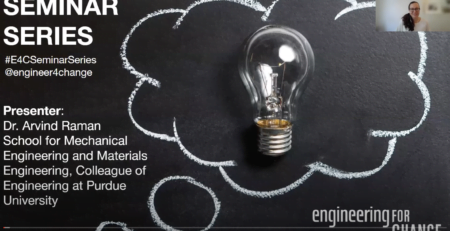So Much to Say: Tips for Shortening Your Policy Brief
A policy brief can feel like the toughest 1-4 pages that you will write for your research project because there is so much to say, so many unknowns, and so much value in a well-crafted policy brief. It might feel like there is just no way that your work is going to fit into that small of a space and be effective. However, it is crucial to remember that your policy brief is only one document among many that you will produce about this research and the policy brief is a very specific communicative tool for helping you with one of the many possible outcomes of this work. Your policy brief does not have to carry the weight of all the work that was done, but it does have to carry enough of it to effectively compel your audience to act on the implications/recommendations that you are sharing with them. In this blog, I will cover some techniques for drafting a succinct policy brief.
Narrowing the focus of your policy brief can begin by looking at the implications and/or recommendations you are seeking to share. Whether you’re starting on a new draft or you’re deep into revisions and trying to reduce the length of your policy brief, consider taking some time to write out what your implications/recommendations are and a few notes on the minimum information from your research that informs them. Essentially, you need to be able to answer the question: what is this implication/recommendation based on within the research that was conducted? Answering this question for each implication/recommendation will help you see if all the implications/recommendations you are putting forward in your policy brief come from the same sources of information in your research. You might find that you actually have a couple of clusters that form where some of your implications/recommendations come from one thread of data or narrative in your research and others that come from another thread. If this is the case, you might consider separating your one policy brief into two policy briefs with narrower focuses based on the research narratives or groupings of data you are pulling from.
Another approach to narrowing your policy brief based around your implications/recommendations would be to look at the topics or the populations that each address and see if there are thematic groupings they can be organized around. For instance, you might think to make a single policy brief out of your agricultural project that is based in Rwanda because it’s one sector within one country. However, when you thematically organize your implications/recommendations, you may find that there are a few that are related to disparities in women’s access to agricultural loans while there is one is related to the impact that agricultural production outcomes have on nutritional deficiencies for children in Rwanda. It could be advantageous to split these into two policy briefs to give each issue you are raising policy awareness to the space they need to be discussed and give your policy brief a narrower focus that is guided by the issues themselves.
Thus far in this blog we have discussed implications and recommendations together. However, as was explored in the Policy Brief Writing Overview with our colleagues from the Purdue Policy Research Institute,
- Implications are a statement about what could happen.
- Recommendations are a statement of what should happen.
When looking through the evidence from your research, you may find that there are suggestions of what may happen if changes are not made or the evidence you have is not strong enough to take a firm stance just yet; this would point toward presenting an implication. Alternatively, a recommendation would be based upon you having strong evidence that not only should something be done, but that you know what the appropriate action is from your work. When thinking about how to narrow down the scope for your policy brief, it could help to focus on writing a brief that is comprised of only implications or only recommendations. For a policy brief which presents implications, you can spend more time presenting more of an if-then narrative. For a policy brief which presents recommendations, you can make declarative and strong statements.
Additionally, you should consider your audience and what they can do about your implications/recommendations. We all have limits to what we can and cannot do, so it seems reasonable that if we are going to deliver a policy brief to someone which asks them to act on an issue that we consider what that person could reasonably do about the problem we are sharing with them. Considering the limits to what your audience could do or have influence over can allow you to trim out implications/recommendations that would not be within their scope of work and tailor the framing in a way that reflects what your audience could do. Doing this will make it easier for your audience to take the actions you propose.
Finally, when narrowing down what to include in your policy brief, it can be helpful to look at what the minimum points of information from your research are needed in order to inform your implications/recommendations. One area of research where this can be particularly challenging is with qualitative research because the kind of data generated can tend to be wordier and more voluminous. It is important to remember the strengths of qualitative evidence [^1] when considering how to draft your policy brief: it tells a story about how people live and how programming plays out when it’s implemented. If you did interviews, see where an interviewee explained the problem you are making an implication/recommendation related to. If you did fieldwork, write about an observation you made that illustrates the reasoning behind the action you are calling for. Quantitative data is valuable, but it doesn’t make an audience feel anything. The story your audience makes up about or infers from quantitative data is what evokes feelings for them. Qualitative data has the strength of giving your audience a story they can connect with and have feelings evoked from them. The essential aspect to know is what information in your research drives your implications/recommendations and communicating that as clearly (and free from jargon) as possible.
For further assistance on drafting your specific policy brief, please reach out to your LASER Research Project Manager or the Purdue Policy Research Institute.
[^1]: For more information about how to effectively use qualitative data in your policy brief, see Christopher J Colvin’s 2022 presentation slides: Qualitative Evidence and Qualitative Synthesis in Policy Briefs.








Leave a Reply
You must be logged in to post a comment.